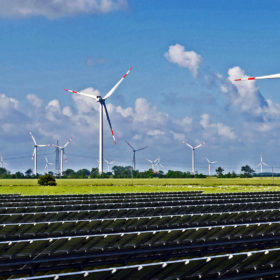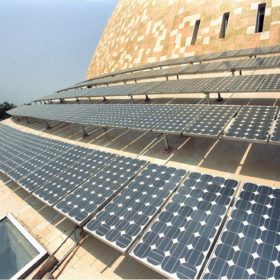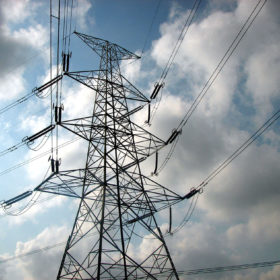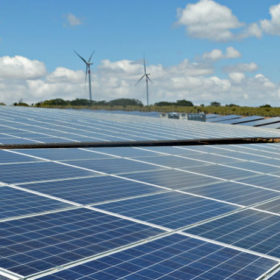Indian Railways plans to tender 4 GW solar project
The procurement will be worth an estimated Rs16,000 crore, and will stipulate the use of 1.2 GW of Indian-made equipment. The power generated will replace 4 GW of coal-fired electricity consumption used by the railways.
SECI tenders 1.2 GW with upper tariff cap of Rs 2.65/kWh
SECI has issued a 1.2 GW solar tender for ISTS-connected projects with an upper tariff ceiling of Rs 2.65 ($0.038)/kWh.
Investment funds scramble to acquire Indian giant’s 1 GW assets
Global Infra Partners, KKR, Brookfield, I Squared Capital and Macquarie are reported to be among those eyeing the renewable energy assets of debt riddled Infrastructure Leasing and Financial Services.
Planned 5 GW Ladakh solar plant will be ‘the world’s largest’
Known as the “roof of the world,” the scenic Ladakh region in the Indian state of Jammu and Kashmir will soon host the world’s largest single-location PV plant.
Renewable capacity in India set to jump by 50% in 2019
India is set to add renewable energy capacity of 15,860 MW in 2019, a leap of 50% on the 10,560 MW installed last year. Around 70% – 10,902 MW – of the new capacity will come from utility-scale solar projects, according to Bridge To India analysts.
Macquarie, NTPC in race to buy IL&FS assets
India’s leading infrastructure finance company IL&FS expects up to Rs 80 billion from wind and solar asset sales.
The year of failed tenders
Tariff ceilings, safeguard duties, a falling rupee and mandated manufacturing capacity turned 2018 into a year of annulled tenders, and no shows by bidders.
Just two bidders for 1.2 GW wind-solar hybrid project
India’s much-hyped first wind-solar hybrid auction found just two bidders, with 360 MW of the 1,200 MW finding no takers at all. This is the second time the Solar Energy Corporation of India (SECI) has held this auction, after the first round in May failed to attract bidders.
MNRE launches 23 GW of solar projects in Leh and Ladakh
The Ministry of New and Renewable Energy has reevaluated the solar potential of the region, in the light of steepling falls in the cost of generating solar electricity. The big push will start with 7.5 GW of new capacity, with a request for selection expected within a fortnight.
Government again attempts to woo foreign manufacturers
Ministry of Science and Technology has reissued a plea for overseas solar companies to partner up with Indian concerns to kick-start production lines.













